Table of Contents
How India Won the Kargil War
The Kargil conflict began in May 1999 when Pakistani soldiers, disguised as militants, infiltrated Indian positions in the high-altitude regions of Kargil sector in Jammu & Kashmir. They captured strategic peaks, including Tololing, Tiger Hill, Dras, and Batalik, threatening the vital NH-1A highway connecting Srinagar to Leh.
Despite initial surprise and the extremely challenging terrain, the Indian Army, supported by the Indian Air Force (IAF), launched “Operation Vijay” to recapture the heights. By 26 July 1999, after over 60 days of intense battle, India had successfully pushed back the intruders.
India’s Key Winning Factors:
- Precise artillery bombardment using Bofors guns.
- Coordinated air and ground attacks.
- Unbreakable willpower and valour of Indian soldiers.
- Global diplomatic success in exposing Pakistan’s covert invasion.
Challenges Faced by India During the Kargil War
- Element of Surprise: The initial infiltration by Pakistani forces went undetected due to harsh terrain and reduced patrolling during winter.
- High-Altitude Warfare: The intruders occupied peaks ranging from 16,000 to 18,000 feet, giving them the tactical high ground.
- Limited Intelligence: Inadequate intelligence and satellite imagery initially slowed India’s counter-response.
- Political Constraints: India chose not to cross the LoC, limiting operational options but showcasing India’s maturity as a responsible democracy.
- Severe Weather: Icy winds, sub-zero temperatures, and lack of oxygen made both combat and logistics immensely difficult.
Operation Safed Sagar: Indian Air Force’s Role
While the Army waged a ground assault under Operation Vijay, the Indian Air Force launched Operation Safed Sagar on May 26, 1999. This was IAF’s first high-altitude air war in such hostile conditions.
Key Highlights of Operation Safed Sagar:
Use of Mirage 2000 jets with laser-guided bombs for precise strikes.
Deployment of MiG-21 and MiG-27 for bombing and ground attacks.
Despite restrictions of not crossing the LoC, IAF neutralized heavily fortified Pakistani bunkers and supply lines.
IAF’s technological edge and precise execution played a critical role in turning the tide in India’s Favour.
Shortcomings Faced by India during Kargil War
While the victory was glorious, the war also revealed several shortcomings:
- Gaps in Surveillance: Lack of real-time satellite reconnaissance delayed detection of infiltration.
- Logistical Challenges: Inadequate high-altitude gear and clothing for soldiers.
- Coordination Issues: Initial coordination between intelligence agencies and armed forces needed improvement.
- Air Strike Capabilities: Limited availability of precision strike weapons at the start.
- Infrastructure Deficiencies: Inaccessibility and poor road connectivity in border areas.
These lessons led to significant post-war reforms, such as the establishment of the Kargil Review Committee, modernization of armed forces, and technological upgrades.
How Indian Bravehearts Won the Kargil War 1999
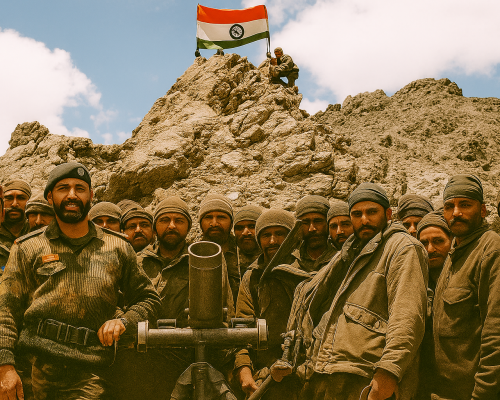
Despite all odds, Indian soldiers displayed unmatched grit and sacrifice. Stories of heroism from Captain Vikram Batra, Grenadier Yogendra Singh Yadav, Lt. Manoj Kumar Pandey, and countless others have become part of India’s military folklore.
Notable Acts of Gallantry
- Capt. Vikram Batra (“Yeh Dil Maange More”) led the daring assault to recapture Point 4875 and laid down his life.
- Lt. Manoj Pandey, despite being gravely injured, cleared multiple bunkers before succumbing to his wounds.
- Grenadier Yadav climbed a vertical cliff under heavy fire to destroy enemy positions and survive 17 bullet wounds.
3 Projects That Tell Tales of Kargil war & Heroes
As part of the 26th Kargil Vijay Diwas celebrations, the Indian Army will launch three significant initiatives aimed at honoring the bravery and sacrifice of its soldiers. These include an e-Shradhanjali portal, allowing citizens to pay digital tributes to the martyrs.
The second is a QR code-enabled audio application that will narrate powerful stories of the battles fought during the 1999 Kargil War.
The third initiative, called the Indus Viewpoint, will provide visitors an opportunity to reach up to the Line of Control in the Batalik sector, offering a closer look at the region where the conflict unfolded.
- Shaurya Smarak (Bhopal)
A national war memorial that narrates stories of Indian soldiers through sculptures, light shows, and storytelling. The Kargil section is especially moving. - Kargil War Memorial, Dras (J&K)
Located at the base of Tololing Hill, this memorial is built by the Indian Army and includes names of martyrs, war trophies, and narration of operations. - Gallantry Awards Portal (by Ministry of Defence)
An online platform detailing the lives and citations of gallantry award winners, including all Param Vir Chakra and Mahavir Chakra recipients from the Kargil War.
10 Must-Know Facts About the Kargil War
- Kargil War lasted for over 60 days — from May to July 1999.
- Over 500 Indian soldiers lost their lives, with thousands wounded.
- Pakistan initially denied involvement, claiming intruders were “Kashmiri militants”.
- India kept the war limited to its side of the LoC, showcasing strategic restraint.
- Tiger Hill, one of the most strategic peaks, was recaptured on July 4, 1999.
- IAF lost a MiG-21 and MiG-27, and one chopper during Operation Safed Sagar.
- Captain Vikram Batra, awarded Param Vir Chakra posthumously, became the war’s most celebrated hero.
- Kargil was the first televised war in India, increasing public awareness and patriotism.
- The U.S. pressured Pakistan diplomatically to withdraw after India’s global outreach.
- Kargil Review Committee (KRC) led to reforms in intelligence, military coordination, and defense modernization.
Conclusion
Kargil Vijay Diwas is not just a day of remembrance — it’s a powerful reminder of India’s military grit, national unity, and the unshakable courage of those who serve at the borders. From the freezing cliffs of Tololing to the bullet-riddled trenches of Dras, the echoes of sacrifice continue to inspire every Indian.
Let us honour them — not just with words, but by building a stronger, safer, and united India they dreamt of and died for.
Also read about the below article, why all of sudden India Dropped plan for the third Aircraft Carrier, what is meant for the future navy.
Why India Dropped Plan for Third Aircraft Carrier: What It Means for the Future Navy

Pratik Kondawale
Strategist | Indian Defence & Global Affairs
Founder of GeoLens.in, Pratik writes in-depth analysis on India’s defence strategy, military tech, and global power shifts delivering sharp insights through an Indian lens.
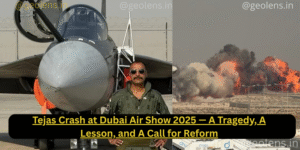
Tejas Crash at Dubai Air Show 2025 — A Tragedy, A Lesson, and A Call for Reform
The Tejas crash at the Dubai Air Show turned a moment of national pride into sudden heartbreak when Wing Commander Syal lost his life. This article unpacks the events of that day, explains why the Tejas crash matters for India’s defense readiness, and outlines the practical lessons and reforms needed to ensure the program recovers stronger. It also honors the pilot’s sacrifice and shows how the Tejas crash can become a catalyst for accountability, safer engineering, and faster delivery of operational jets.
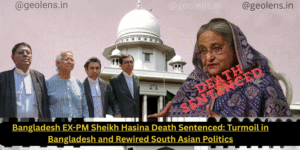
Bangladesh EX-PM Sheikh Hasina Death Sentenced: Turmoil in Bangladesh and Rewired South Asian Politics
The Sheikh Hasina death sentenced verdict has detonated one of the most explosive political crises in Bangladesh’s modern history. Delivered in absentia by the International Crimes Tribunal, the ruling blames the former prime minister for orchestrating widespread state violence during the 2024 student protests. The decision has dismantled the Awami League’s long-standing dominance, pushed Bangladesh into a volatile power vacuum, and placed India in the middle of a diplomatic standoff. As questions about justice, political motivation, and regional stability collide, the fallout of this verdict is reshaping South Asian geopolitics in real time.
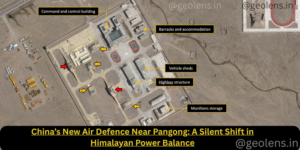
China with New Air Defence Near Pangong: A Silent Shift in Himalayan Power Balance
China’s new air defence near Pangong marks a major strategic escalation in the Himalayas. Satellite imagery reveals advanced HQ-9 missile systems, radar units, and fortified shelters aimed at asserting Chinese air dominance over eastern Ladakh. This development not only alters the regional military balance but also raises critical questions about India’s preparedness, response strategy, and the long-term implications for border security and geopolitical stability in South Asia.
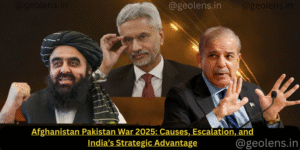
Afghanistan Pakistan War 2025: Causes, Escalation, and India’s Strategic Advantage
The recent Afghanistan Pakistan war marks a dangerous escalation from border tensions to open state-level confrontation. What began with Pakistani airstrikes inside Afghan territory quickly spiraled into fierce Afghan retaliation, signaling Kabul’s newfound military assertiveness. This conflict exposes Pakistan’s growing vulnerabilities—diplomatic isolation, two-front pressure, and internal instability—while reshaping regional power equations.
For India, the turmoil presents both strategic opportunity and cautious optimism. A distracted Pakistan allows New Delhi to strengthen its influence in Afghanistan and consolidate regional partnerships. Meanwhile, the muted response from Gulf powers like Saudi Arabia and Qatar underscores Islamabad’s weakening alliances. As the Durand Line dispute reignites and media warfare intensifies, the Afghanistan Pakistan war stands as a defining moment in South Asia’s evolving geopolitical order—one that could tilt the balance of power in India’s favor.

Gen Z Protests in Nepal: From Nepo Kids, Corruption, Social Media Ban to Western Interference—What It Means for India
The Gen Z Protests in Nepal go beyond anger over a social media ban—they represent decades of frustration with corruption, nepotism, unemployment, and poor governance. Fueled by rising inflation, scams, and lack of opportunities, Nepal’s youth have taken to the streets demanding accountability.
But behind the scenes, questions of Western interference and U.S. attempts to reshape the world order add a deeper geopolitical layer. For India, Nepal’s instability is more than a neighbor’s problem—it carries direct implications for security, migration, and regional power balance.
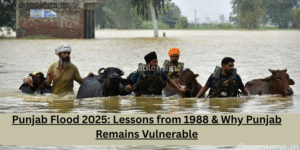
Punjab Flood 2025: Lessons from 1988 & Why Punjab Remains Vulnerable
Punjab Flood 2025 has left a devastating mark across the state, with 1,400 villages submerged, 350,000 people affected, and 149,000 hectares of farmland under water. As rivers overflowed and dams released excess water, the disaster exposed Punjab’s recurring flood challenges and the urgent need for long-term resilience.
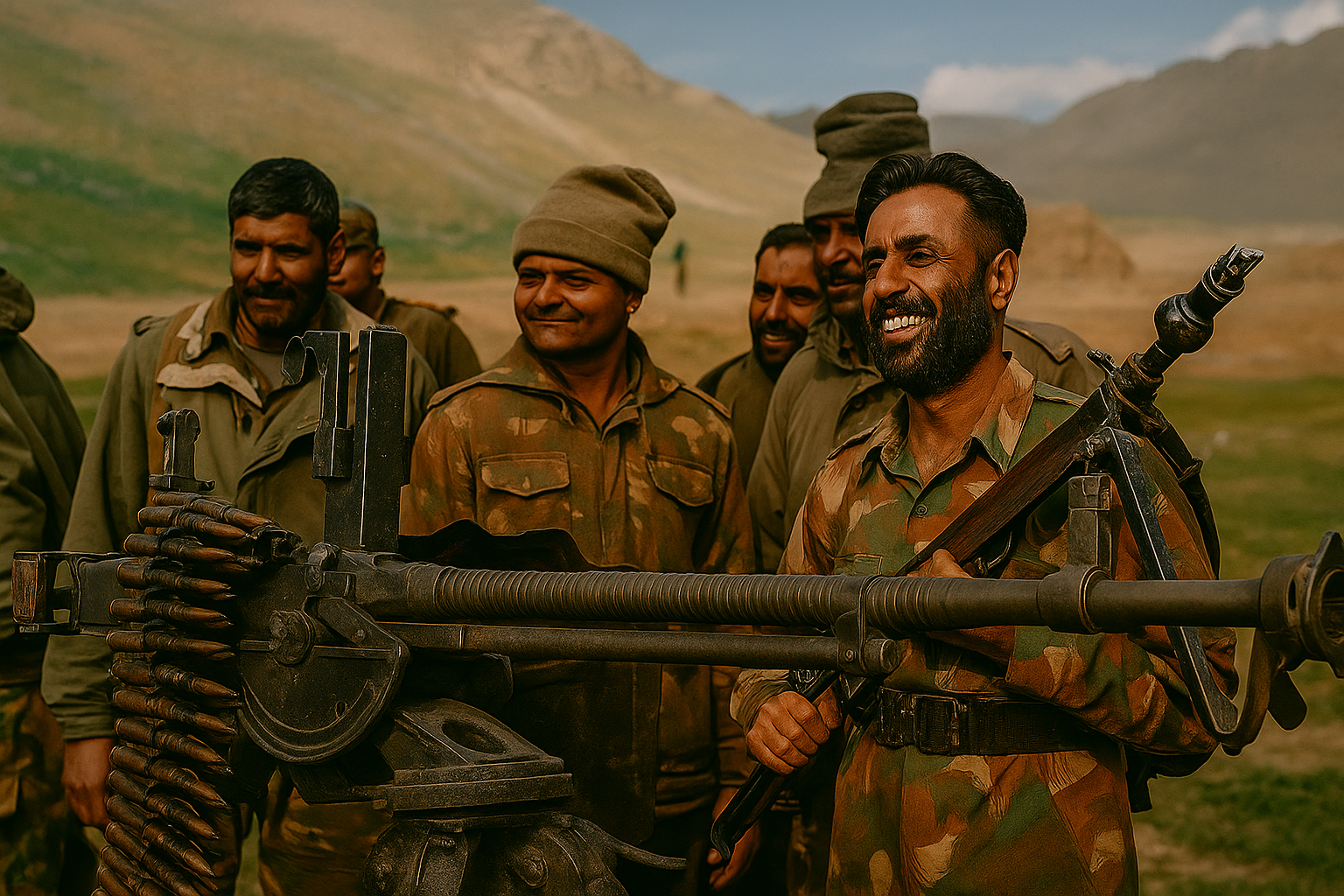
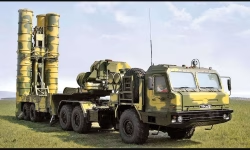
2 thoughts on “Kargil Vijay Diwas 2025: Honoring the Valor of India’s Bravehearts|26th July 1999”